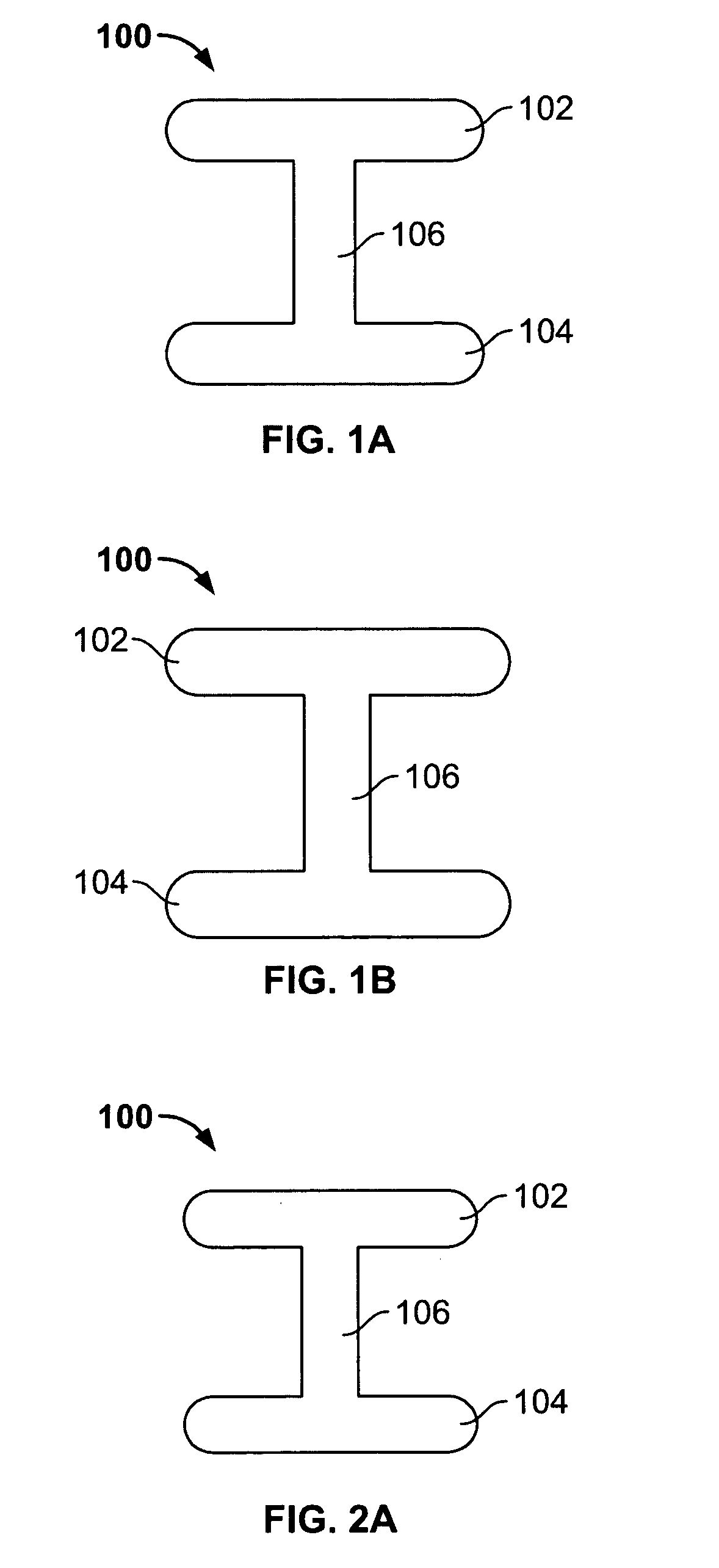Surgical fastening system
- Summary
- Abstract
- Description
- Claims
- Application Information
AI Technical Summary
Benefits of technology
Problems solved by technology
Method used
Image
Examples
Embodiment Construction
[0022] The following illustrations are provided as variations of the present invention. It should be understood that there are many combinations of the present invention and that figures illustrating all variations of the invention would be numerous. Therefore, the invention is intended to include combinations of aspects and features of the illustrated embodiments, or combinations of the specific embodiments themselves.
[0023]FIGS. 1A-1B, illustrate a side view of a basic variation of the inventive fastener 100. As seen in FIG. 1A, the fastener 100 includes a first anchor member 102 and a second anchor member 104 and a connecting portion 106 separating the two anchor members 102104. The “I-type” fastener shape illustrated in FIGS. 1A-1B is merely for illustrative purposes. Naturally, the anchor portions 102104 may have a variety of shapes, cross-sections, and configuration as discussed herein. However, the anchor portions 102104 will generally have a shape that allows for retention ...
PUM
 Login to View More
Login to View More Abstract
Description
Claims
Application Information
 Login to View More
Login to View More - R&D
- Intellectual Property
- Life Sciences
- Materials
- Tech Scout
- Unparalleled Data Quality
- Higher Quality Content
- 60% Fewer Hallucinations
Browse by: Latest US Patents, China's latest patents, Technical Efficacy Thesaurus, Application Domain, Technology Topic, Popular Technical Reports.
© 2025 PatSnap. All rights reserved.Legal|Privacy policy|Modern Slavery Act Transparency Statement|Sitemap|About US| Contact US: help@patsnap.com



